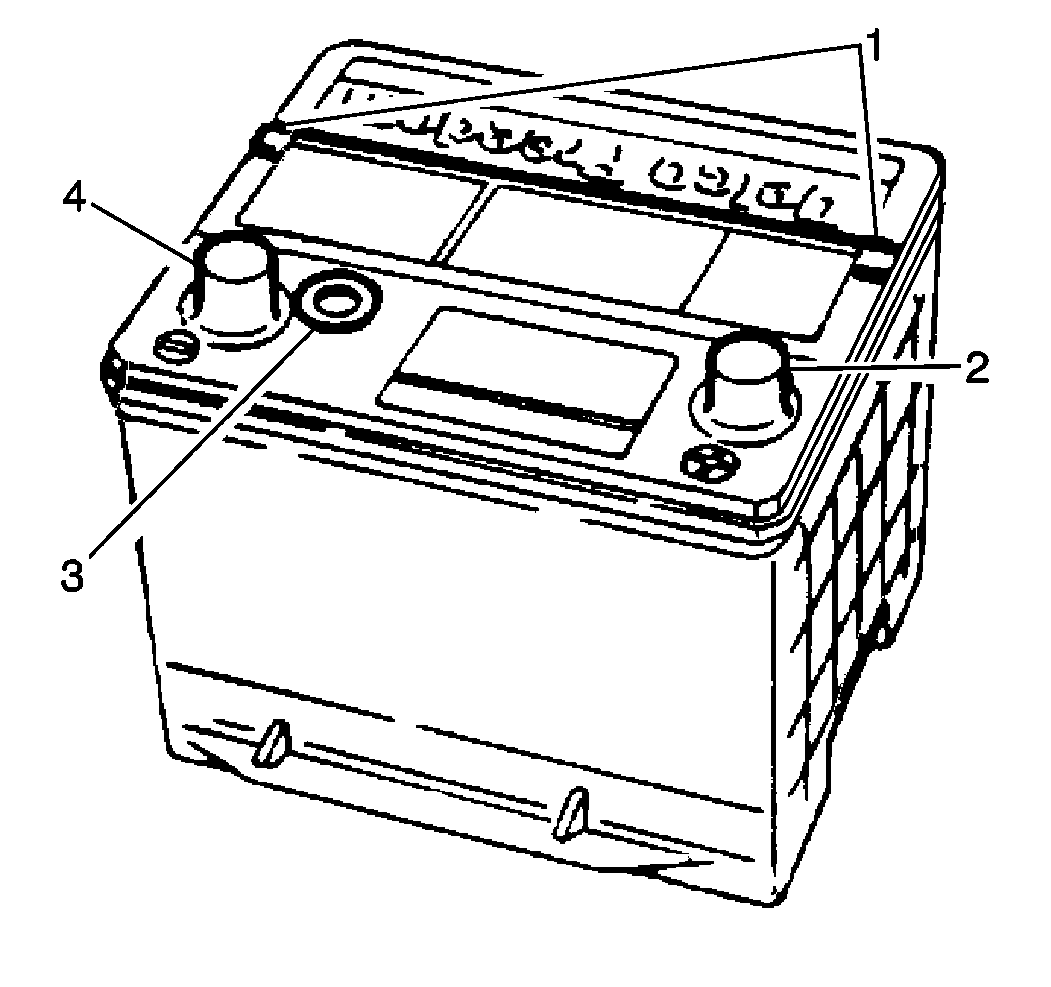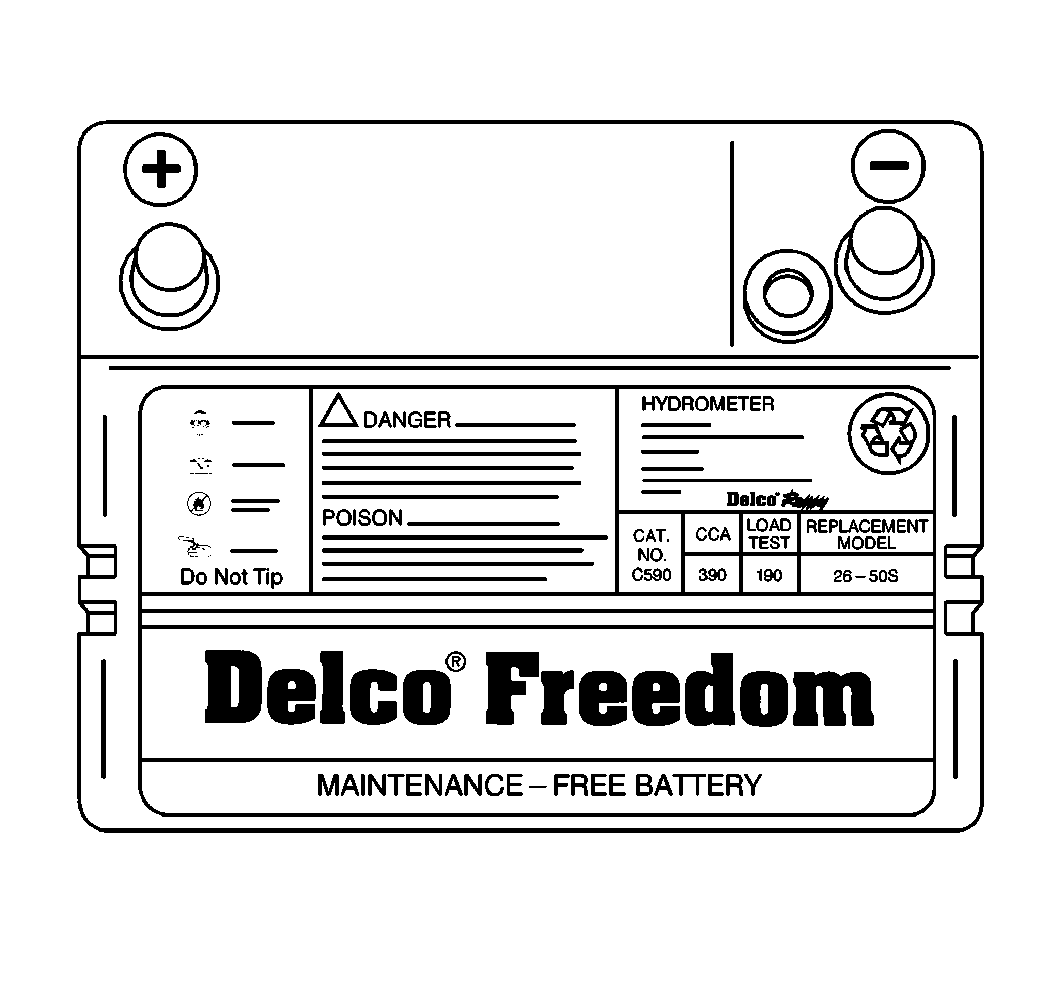
The sealed battery is standard on all models. The battery is completely sealed except for two small vent holes (1) located on the side of the battery. These vent holes allow the small amount of gas produced in the battery to escape.
The battery has three major functions in the electrical system:
| • | First, it provides a source of energy for cranking the engine. |
| • | Second, it acts as a voltage stabilizer for the electrical system. |
| • | Third, it can, for a limited time, provide energy when the electrical load exceeds the output of the generator. |

The battery specifications label contains information pertinent to the servicing of the battery, such as test ratings, recommended battery replacement part numbers and service precautions.
Battery Ratings and Current Test
A battery has two ratings: a reserve capacity rating at 27°C (80°F) which is an estimate of the time a fully charged battery will operate the vehicle with no generator operation; and a cold rating at -18°C (0°F) which indicates the cranking load capacity.
Reserve Capacity
The reserve capacity is the maximum length of time (expressed in minutes) required for a fully charged battery to discharge to a terminal voltage of 10.5 volts direct current (VDC). All batteries are rated at a constant temperature of 27°C (80°F) and a constant current drain of 25 amperes. This current drain is about the same as operating a vehicle with the headlamps on with other minimal electrical loading (radio, etc.) and no generator output.
Cold Cranking Amperage
The cold cranking amperage rating is the minimum amperage which must be maintained by the battery for 30 seconds while meeting a minimum voltage requirement of 7.2 VDC. All batteries are tested at -18°C (0°F).
Electrolyte Freezing
The freezing point of the electrolyte depends on its specific gravity. Since specific gravity depends on the state of charge, the battery should be protected against freezing by keeping it in a charged condition. If the electrolyte is frozen the battery will need to be replaced.
Carrier and Retainer
The battery carrier and retainer bracket should be clean and free of corrosion before battery installation. The carrier should be in good condition with a minimal amount of corrosion so that it will hold the battery securely and keep it level.
Important: Make certain that there are no parts or tools in the battery carrier before installing the battery. To prevent the battery from shaking in its carrier, the retainer bracket bolt must be tightened to specification.
